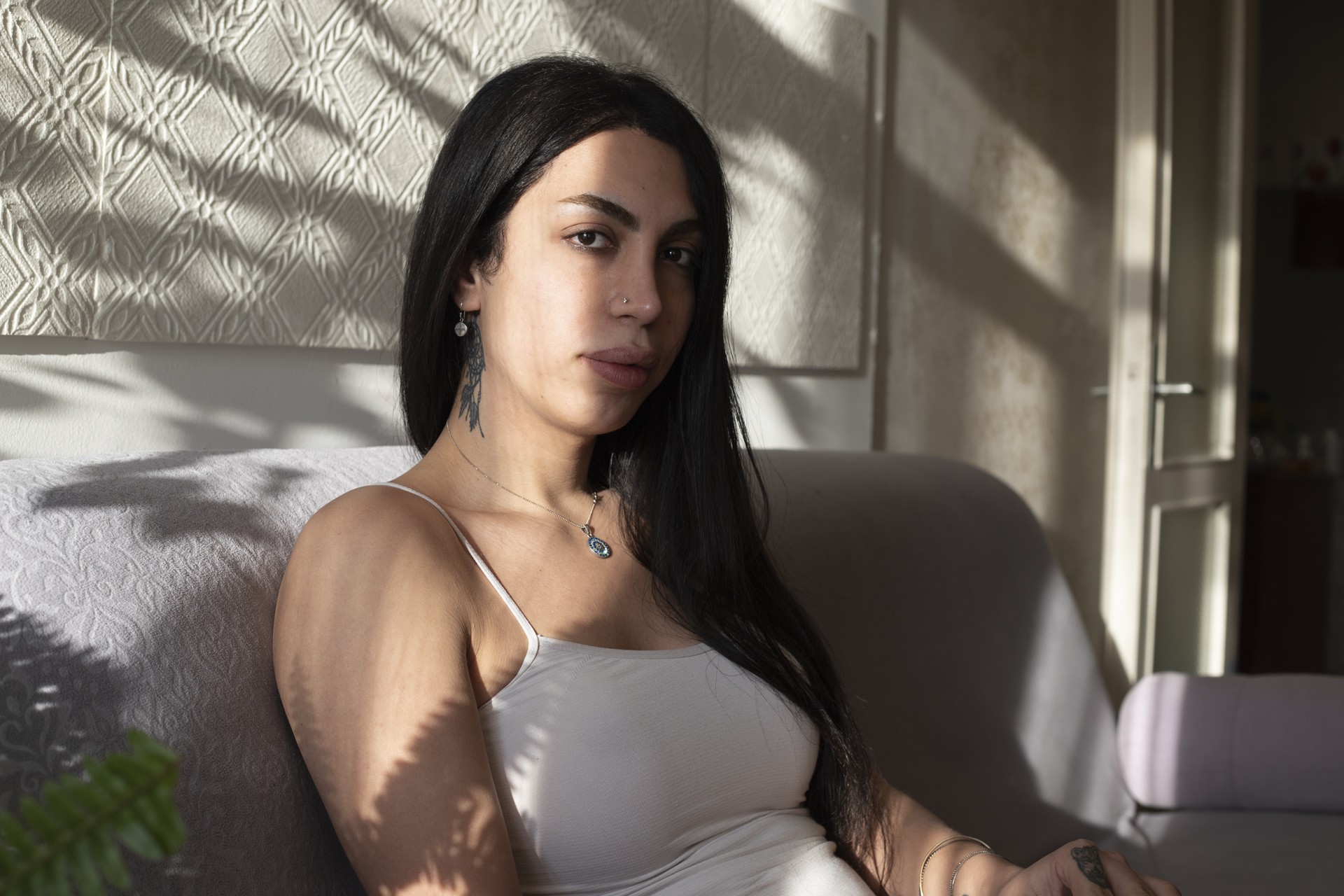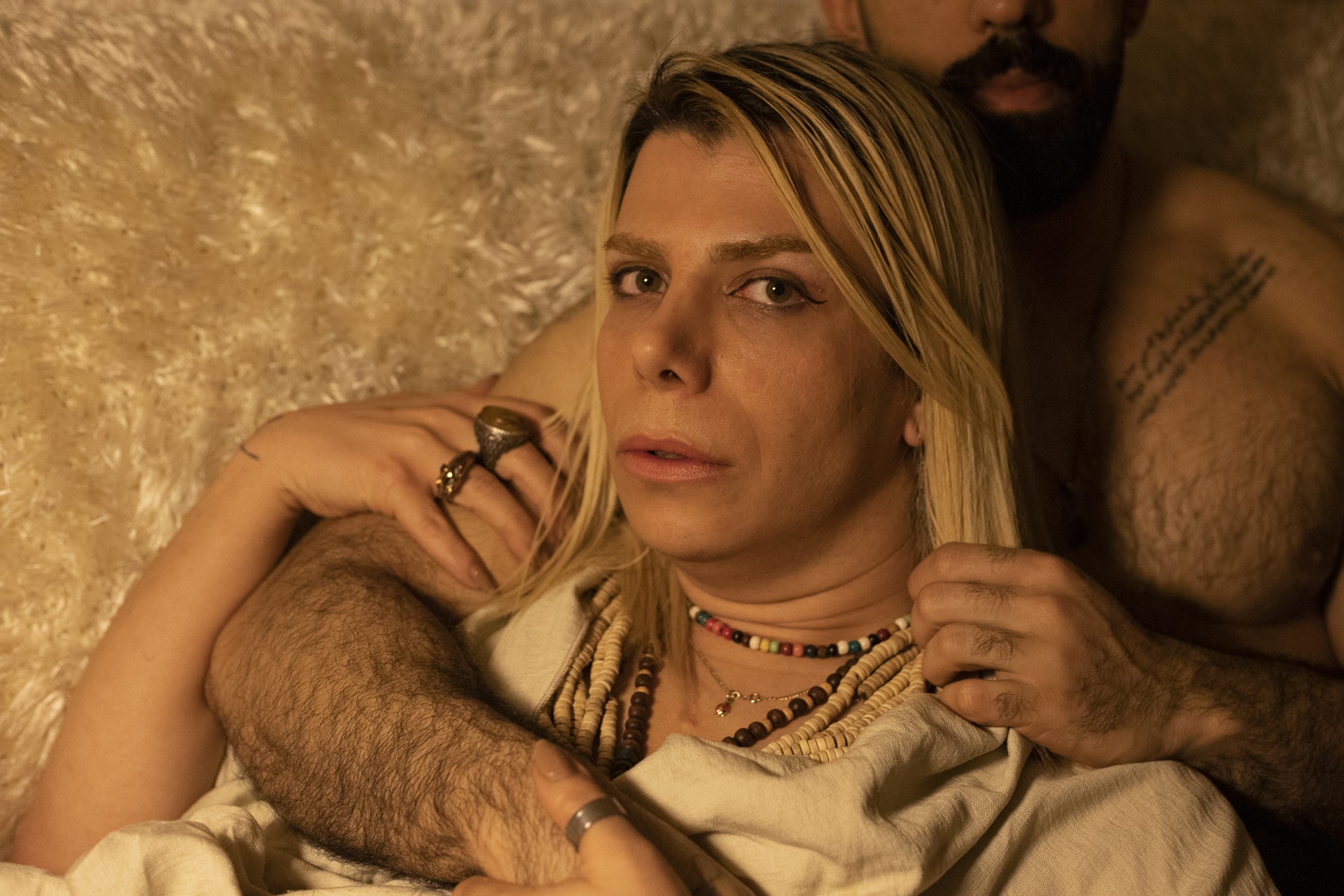Being Transgender within the Islamic Republic's Medical and Legal Context

Haleh is chilling out in the living room after finishing her job in the barbershop. (c) Masi Abolhassan, Special Permission Granted By Photographer
"First, I was confused. I was asking myself, who I really am? But when I entered high school, I suddenly received ample attention from classmates [girls]. They said I am so different and I am just like boys. Even my classmates asked me to unveil my hijab [Mantoo-va- maghnae in Persian] during the breaks to see how my clothing style was. This [attention] surprised me during high school and helped me know myself better. It lessened my confusion and ensured me more than before about my differences with others. I started to seek people like myself".
Mehran, an Iranian transgender man, talking about discovering his gender identity as an adolescent in Yaghoubirad and colleagues’ 2023 study on experiences of gender identity development amongst transgender men in Iran [1].
While homosexuality and same-sex relationships are illegal under the Islamic Republic’s penal code, being transgender is legally allowed in Iran under certain conditions due to Ayatollah Khomeini’s 1982 fatwā, which is a formal ruling within Islamic law [2,3]. Among some psychiatrists, psychologists, religious authorities and judges within the Islamic Republic, being transgender means being born into the wrong body, which is believed to be reformed through medical procedures and interventions [4]. As a result, transgender individuals must undergo sex reassignment surgery, which physically changes sex characteristics, to change their legal name and gender [2 5, 6]. However, sex reassignment surgeries are only allowed after a lengthy medical and judicial process, which can be extremely frustrating [7, 8]. For instance, in Yaghoubirad and colleagues 2023 study on Iranian transgender women’s experiences with gender identity development, Azadeh, an 18-year-old Iranian transgender woman, talks about her experience with the legal approval process for surgery:
“Everything was fine before, but the long process is making me sick, when you run after something for a long time, you ask yourself whether it is worth it? I feel like I do not know myself anymore” [8].

Baran and her ex-partner continued a hidden relationship for six years, but under the influence of living in an unstable condition, their relationship ended up last year. (c) Masi Abolhassan, Special Permission Granted By Photographer
Based on the Standards of Care for the Health of Transsexual, Transgender, and Gender-Nonconforming People, gender-affirmative health care, which includes behavioural, medical, psychological, and social interventions, should be unique to each individual’s needs and concerns in supporting their gender identity [6,9]. This means that some transgender people may not want or need sex reassignment surgery to affirm their gender identity. Instead, a legal change in name and gender without sex reassignment surgery may be desired. However, the Islamic Republic requires sex reassignment surgery for a legal name and gender change. Thus, gender-affirmative health care, as allowed by the Islamic Republic, may not adequately address all transgender Iranians’ unique needs and concerns [6-8].
Alongside the Islamic Republic’s restrictions on gender-affirmative health care, transgender people in Iran face many experiences of discrimination. In their 2024 study on attitudes and beliefs towards transgender people, Talaei and colleagues found high levels of prejudice and discrimination against transgender individuals, also known as transphobia, amongst participants in Mashhad, Iran [6, 10]. Discrimination towards transgender people may be due to Iranian culture’s strong traditional gender attitudes and beliefs, strict social boundaries between men and women, and low tolerance for violations of these gender rules [8].

Maki is dancing with her boyfriend who supports her emotionally and financially. (c) Masi Abolhassan, Special Permission Granted By Photographer
Talaei and colleagues’ findings are also supported by Iranian transgender women’s experiences within society. With their sample of 127 Iranian transgender women, Nematollahi and colleagues found that almost 87% of participants reported experiences of discrimination with family, at school, at work, and even in healthcare settings. Furthermore, 71% of Nematollahi and colleagues’ participants said they had endured physical violence, while 63% had experienced sexual violence [11].
In contrast, when Yaghoubirad and colleagues interviewed Iranian transgender men’s experiences with gender identity development, participants described both experiences of discrimination and acceptance. Specifically, during childhood, participants talked about being tolerated, admired, and encouraged for their masculine behaviours and interests. However, when they got to adolescence, these transgender men were expected to follow feminine gender norms, especially with pressure from mothers and other women in their lives. After sex assignment surgery, most participants experienced eventual acceptance and elevated social status within their family. They also gained higher civil rights and men’s rights after legal name and gender changes [1].
Compared to transgender men, Iranian transgender women report lower levels of family acceptance and perceived social support. Differences in experiences of discrimination and acceptance between transgender men and women in Iran may be due to the high value Iranian culture places on masculine traits [1].
[1] Yaghoubirad, M., Azadfallah, P., Cameron, C. A., & Farahani, H. (2023). Talking with Iranian trans men: Their experiences and identity development. Journal of Gay & Lesbian Mental Health, 27(1), 85–108. https://doi.org/10.1080/19359705.2022.2072034
[2] Saeidzadeh, Z. (2020). “Are trans men the manliest of men?” Gender practices, trans masculinity and mardānegī in contemporary Iran. Journal of Gender Studies, 29(3), 295–309. https://doi.org/10.1080/09589236.2019.1635439
[3] Encyclopædia Britannica, Inc. (2024, February 1). Fatwa. Britannica. https://www.britannica.com/topic/fatwa
[4] Ardebili, M. E. (2018). Transgenderism in Iran. In Current Critical Debates in the Field of Transsexual Studies (1st ed., pp. 158–165). Routledge. https://doi.org/10.4324/9781351058995-11
[5] Ferrando, C. A. (2019). Overview of Surgery for Transgender Patients. In Comprehensive Care of the Transgender Patient (pp. 48–53). Elsevier. https://doi.org/10.1016/B978-0-323-49642-1.00007-7
[6] Talaei, A., Sorouri Khorashad, B., Afzaljavan, F., & Omidvar Tehrani, S. (2024). Attitudes and Beliefs Towards Transgender Individuals Among Residents of Mashhad, Iran in 2020. Archives of Sexual Behavior, 53(2), 569–576. https://doi.org/10.1007/s10508-023-02744-x
[7] Talaei, A., Hedjazi, A., Badieyan Moosavi, N., Dadgarmoghaddam, M., Lotfinejad, N., & Khorashad, B. S. (2022). The Epidemiology of Gender Dysphoria in Iran: The First Nationwide Study. Archives of Sexual Behavior, 51(4), 1881–1889. https://doi.org/10.1007/s10508-021-02250-y
[8] Yaghoubirad, M., Azadfallah, P., Farahani, H., & Cameron, C. A. (2023). Talking with Iranian trans women: Their experiences and identity development. Journal of Gay & Lesbian Mental Health, 27(1), 59–84. https://doi.org/10.1080/19359705.2021.1923607
[9] World Health Organization. (n.d.). Gender incongruence and Transgender Health in the ICD. World Health Organization. https://www.who.int/standards/classifications/frequently-asked-questions/gender-incongruence-and-transgender-health-in-the-icd
[10] Merriam-Webster. (n.d.). transphobia. Merriam-Webster. https://www.merriam-webster.com/dictionary/transphobia
[11] Nematollahi, A., Farnam, F., Gharibzadeh, S., & Khoda-Khah, P. (2022). Discrimination, violence, and suicide in transgender women in Iran. Health Care for Women International, 43(7–8), 861–872. https://doi.org/10.1080/07399332.2021.1920944
‘At war with my own body:’ Iran’s transgender community still at risk by Smko Rojhelati (2023), published on Rudaw Media Network
Shiva – An Iranian Transwoman’s Story by Tableau Mag
Iran’s transgender community: Legally recognised yet socially ostracised by euronews
Transgender In Tehran: Arsham’s Story by Radio Free Europ/Radio Liberty
Being a Trans Person in Iran, an Overlooked and Misunderstood Minority by Fatimah Hossaini, published on outriders
Watch the video below to learn more!
As someone with direct experience, Dr. Behzad Khorashad shares firsthand knowledge about providing gender-affirming health care for transgender Iranians. And through conversation with this psychiatry resident at the University of Utah, learn more about the nature of the Islamic Republic‘s medical-legal system for gender-affirming health care, including its’ impact on transgender Iranians and the clinicians who provide care for them.
